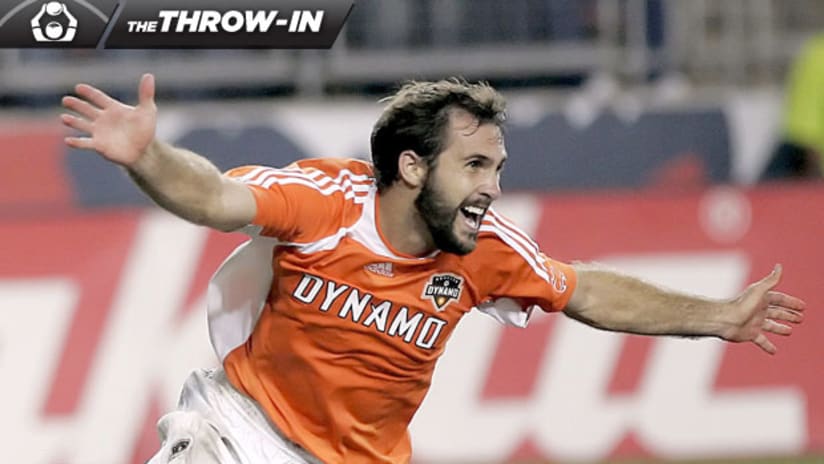One of the more memorable scenes in the 2011 film adaptation of Michael Lewis’ seminal Moneyball is when a table full of Oakland Athletics scouts are discussing their options in the Major League Baseball draft. Their criteria seems so quaint and outdated, it’s played for laughs.
They prefer one player in particular because of his “classy swing, a real clean stroke,” one scout offers. But he can’t hit the curveball, another scout points out.
“And an ugly girlfriend,” the scout continues. “Ugly girlfriend means no confidence.”
It’s pure comedy as Brad Pitt, portraying A’s general manager Billy Beane, stands to one side and scoffs at the stubborn past of the game. The old-school thinking is lampooned as being so behind the times, the silver-haired scouts are literally stuck in another generation.
The statistical revolution, at least as portrayed by Moneyball, is supposedly the future of sports. It’s helped countless baseball teams identify talent that fits their financial models. But the opposite has held true, too – good, old-fashioned fundamentals haven’t gone by the wayside, either. Those gray-haired scouts are still all over the sport, identifying players whose old-fashioned skills are still a huge help to winning teams.
It’s been the same for soccer. While the statistical revolution is slowly creeping into the Beautiful Game, it’s not like everyone in the sport is pounding down doors to get behind the latest thing. And MLS certainly has its fair share of old hands who aren’t quite ready to embrace the Religion of Numerology just yet.
Yes, Major League Soccer has its partnership with Opta. Every team in the league uses either Match Analysis or Prozone software to dissect video statistically. And New York, New England, Sporting Kansas City and San Jose – that we know of – employ consultants whose sole job it is to crunch numbers.
But the idea that an old hand like Bruce Arena, Sigi Schmid or Peter Nowak – wherever he turns up – start consulting databases and spreadsheets instead of relying on their years of experience is laughable. (It’s probably no coincidence that US Soccer signed a long-term deal with Prozone in 2007, within months of Arena's departure from the helm of the US national team.)
Even at an evolving place like D.C. United, the opinions are mixed – assistant coach Chad Ashton is old-school, goalkeeper coach Pat Onstad loves his numbers and head coach Ben Olsen falls somewhere in between.
Dominic Kinnear laughs when talking about Opta’s chalkboard, which features burn patterns to illustrate player movement over a game.
“It’s like the field’s on fire,” Kinnear joked to MLSsoccer.com. “I do believe in statistics and I think they tell a story. But when you continue to break it down like a lot of these guys are doing, I kind of lose interest.”
To be fair, Kinnear was quick to add, he gets it – people around the league are looking for new ways to evaluate talent and quantify skills, especially in a league like MLS where the salary cap leaves little room for error. But the same argument many baseball people had during the sabermetrics explosion carries over into soccer: Not everything is quantifiable.
“Behind all the statistics is still the physical and mental aspects of soccer,” Kinnear added. “Break down the scoring in the last 15 minutes of a game – that shows the physical and mental ability for your team. If you’re getting scored on in the first 15, your team may not be ready out of the locker room.”
And sometimes, a player’s effectiveness defies all logic. Take one of Kinnear’s former players, Brian Mullan (pictured above). The veteran midfielder’s career numbers are spectacularly mediocre: a shade more than two goals and four assists per season. And according to Opta, he’s middle-of-the-road in nearly every offensive category.
Not exactly eye-popping numbers for a guy who has played an attacking role for the entirety of a 12-year career. Yet Mullan is one of the most decorated players in league history, with a haul of five MLS Cups, two Supporters’ Shields and a US Open Cup.
“The amount of work he did and the way he made the players around him better, there’s no statistic for that,” said Kinnear.
He has a supporter in Columbus, where Robert Warzycha says the intangibles just do not translate into statistics.
“A good player makes everybody around him better,” the Crew coach told MLSsoccer.com. “His composure on the ball makes everyone around him better. They feel less pressure when he’s on the ball. There is no statistic for that.”
Of course, if you ask a stats wizard, he’ll probably come up with some dazzlingly arcane way to prove Mullan is an invaluable asset, much like the way Moneyball turned the otherwise ordinary Nick Swisher into an eventual starting outfielder and World Series champion with the New York Yankees.
But it’s going to take a lot more than that to turn what many consider a mere cult into gospel.
“Stats don’t tell the whole story,” said Kinnear. “It’s like art and math – math tells a story, but art is the thing you can’t explain.”
Jonah Freedman is the managing editor of MLSsoccer.com. “The Throw-In” appears every Thursday.














